July 4, 2024
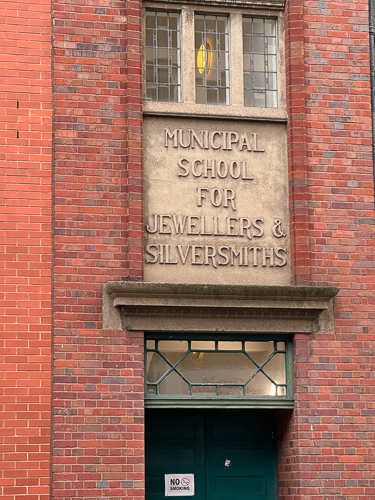
According to the Birmingham Directory of 1780, there were 26 jewelers at the time. Because the definition of a jeweler was not explained in the directory, it is thought that the number of actual jewelers may be lower. It is thought that by the start of the 19th century, there were around 12 jewelry manufacturing companies, employing approximately 400 people. The following is just a very small indication of the buildings throughout the quarter.
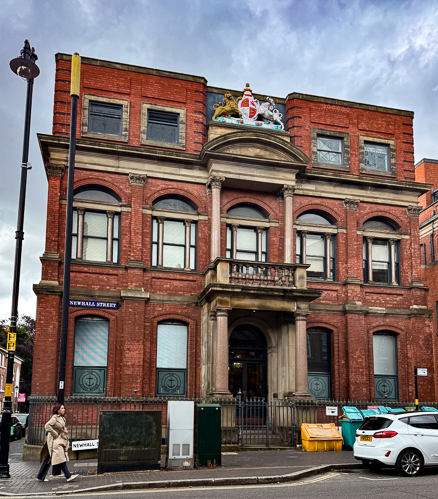
Birmingham Assay Office
The Jewelry Quarter started out as a residential neighborhood. By 1790, manufacturing businesses were starting to establish a presence in the area. Homes were combined into workshops and eventually purpose built factories began to pop up.
The growth of industry in this area increased with the establishment of the Birmingham Assay Office in 1773.
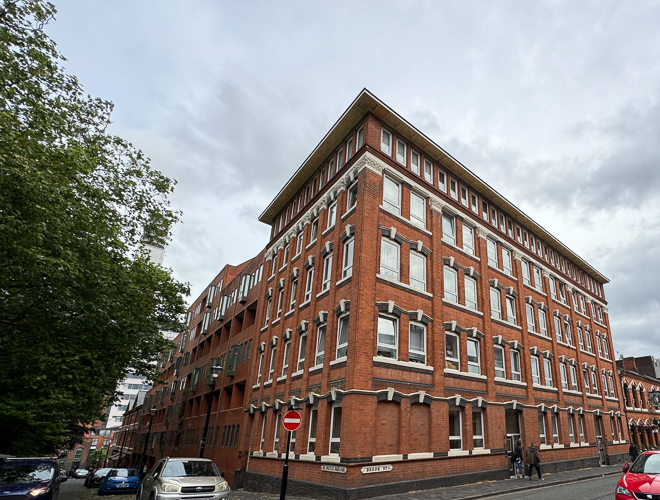
Dark red brickwork with terracotta detailing is synonymous with the Jewelry Quarter.
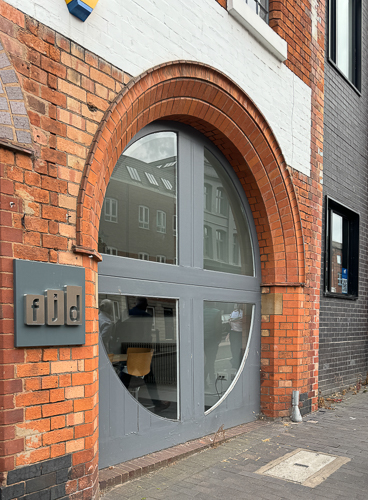
The area is becoming gentrified, and only historic preservation is keeping the quarter as close to its original feel as possible. Above is what would have been an entry for goods into a warehouse. It now serves as a stunning doorway.

In 1868, the Birmingham Society of Artists received its royal charter and was given official consent to use the term “royal” in its title. The RBSA is now housed in the Medicine Bakery on New Street.
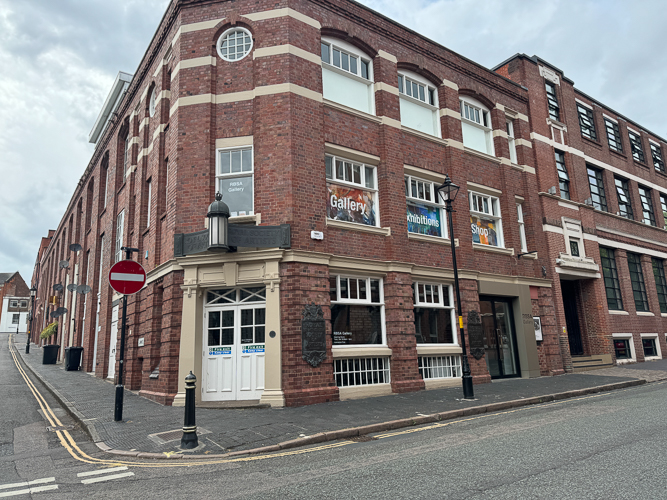
RBSA Gallery
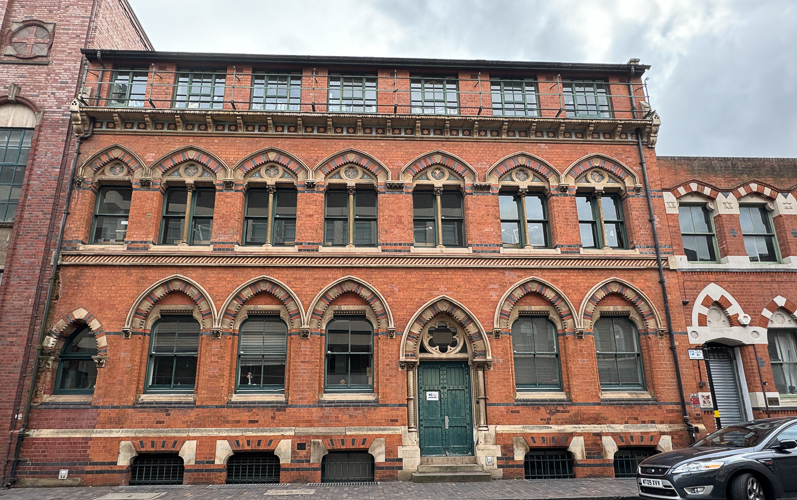
Birmingham City University, School of Jewelry
The Birmingham School of Jewellery and Silversmithing was established in 1890 as a branch of the School of Art when Martin & Chamberlain converted a goldsmith’s factory, built in 1865 to a design by J. G. Bland. The top story was added in 1906 by Cossins, Peacock & Bewlay who also designed the south extension in 1911.
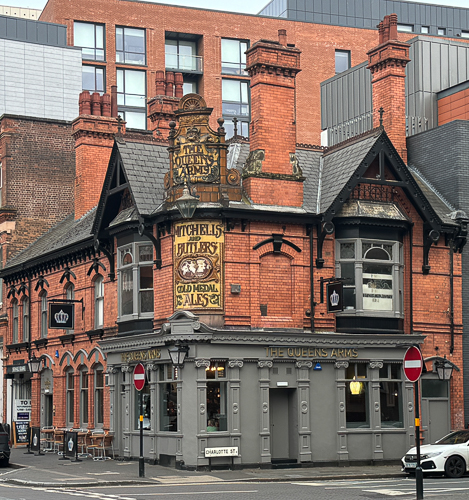
The Queens Arms – Mitchell and Butlers Gold Medal Ales
The Queen’s Arms was built c. 1870. It is most noticeable because of its tiled art nouveau sign on its exterior, which was remodeled in 1901 following designs of the architect Joseph D. Ward for its owners, Mitchells & Butlers. Mitchells & Butlers runs about 1,784 managed pubs, bars, and restaurants throughout the United Kingdom. The company’s headquarters are in Birmingham.
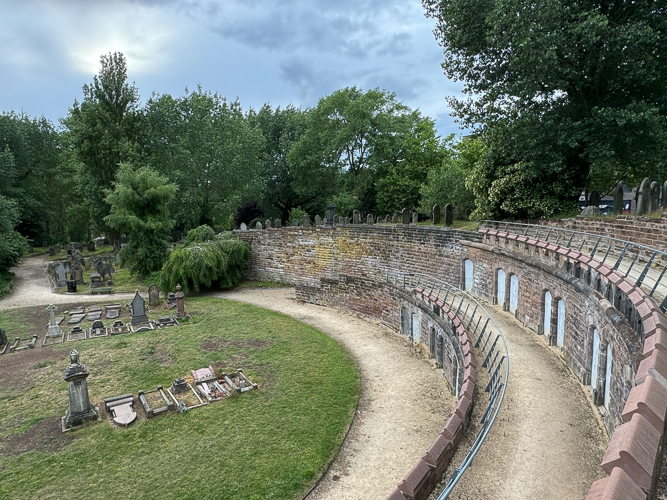
Warstone Lane catacombs and cemetery.
Warstone Lane Cemetery was established in 1848 and accepted new burials until 1982. Above are the tiered catacombs. The cemetery sits on the site of an abandoned sand pit.
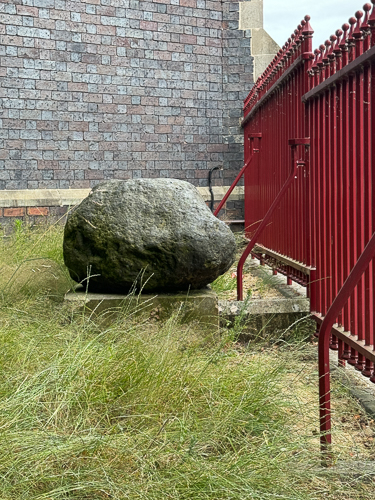
The War Stone rock gave Warstone Lane Cemetery its name. It is a glacial erratic made from the volcanic rock felstone and carried here from Wales by glacial ice. Originally it was known as the Hoar Stone, which was likely derived from the Old English har stan feld, meaning ‘boundary stone field. It was used as a parish boundary. Today, it remains a monument to the past and has been located on a sandstone plinth with the following inscription:
“This felsite boulder was deposited near here
by a glacier during the Ice Age: being at one
time used as a parish boundary mark, it
was known as the ‘Hoar Stone’ of which the
modern War Stone is a corruption”.
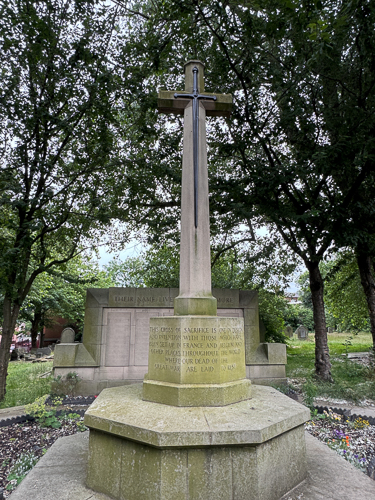
I did not have time to explore this cemetery, but as I was walking past the war stone, I noticed this Cross of Sacrifice. The Cross of Sacrifice is a Commonwealth war memorial designed in 1918 by Sir Reginald Blomfield for the Imperial War Graves Commission. It is present in Commonwealth war cemeteries containing 40 or more graves.
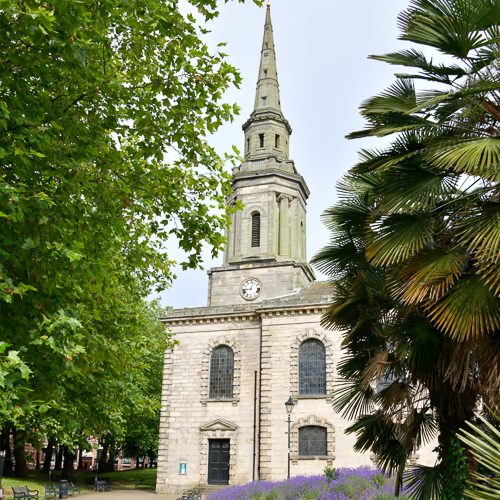
St Paul’s
St Paul’s Church was designed by Roger Eykyn, and it surrounds St Paul’s Square. Construction began in 1777 and was completed in 1779.
These are just a very small sample of the buildings of the jewelry district in all states of repair, disrepair, and restoration.